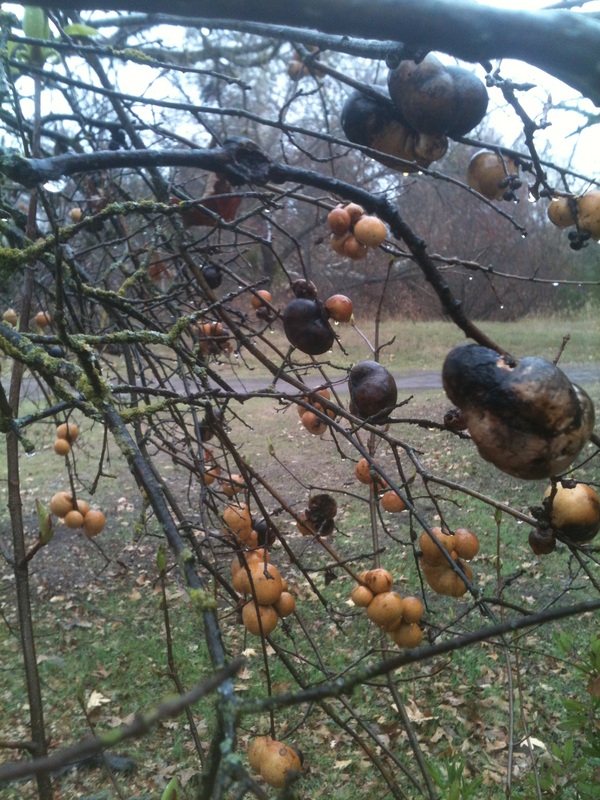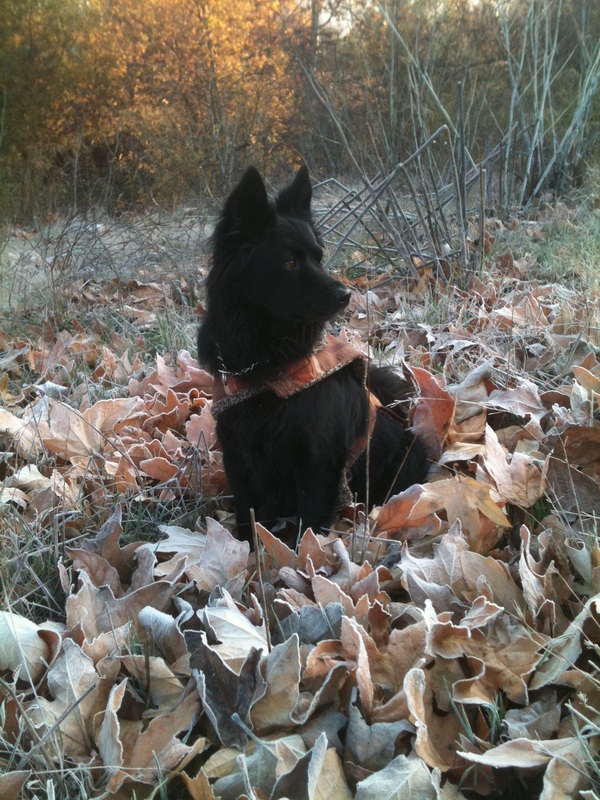|
A faint melody plays in the woods today, the nearly forgotten sound of falling rain. My dog and I wade down a glistening stream of curled, sienna-toned leaves. The earth smells musty and moist. The camouflage patterns on the sycamores shine, reminding me of paint-by-number kits. Suddenly Darcy stops. She won’t move on, no matter how hard I tug her leash or plead. Her nose points up; I follow her bright, fixed gaze. Above me, bare oak branches crackle a sky the color of new concrete. At the tops of the trees twelve vultures hulk, spreading their wings to dry like cormorants. I feel as if I have just stepped into a Poe story – or a Hitchcock movie. I have never seen such a large group of the carrion birds (called a venue, I later learn), and never in trees. Somehow it seems far less eerie to see them looming over a carcass on the ground, where at least their presence is common and their purpose clear. I’m not sure why Darcy is so disconcerted, though. They aren’t any bigger than the wild turkeys I feed, and those birds she ignores with notable disdain. But she is a very wise dog. Perhaps she knows that vultures come with death. The rainfall intensifies. I pull Darcy under the veils of the valley oaks, their dangling twigs hung with fat pairs of oak-apple galls. The beige and black pods, each made by the sting of a wasp and containing one larva, depend from every limb like ornaments. Darcy sniffs tentatively at the base of one of these oaks, then stands on her back feet to peer in its leaf-laden crotch. There I see steam rising up from fresh scat. I’m guessing it’s that of a bobcat, whose prey may have drawn these Stygian scavengers. One swoops away to swirl and soar in a circle above my head. I marvel at its unexpected grace. On the ground, vultures’ flat, weak feet makes them lumber and hop, as if deformed. Their gross behaviors amplify the effect: besides plunging their featherless faces inside dead flesh, they hiss and grunt. They pee on themselves to cool off and kill germs, and they vomit a vile solution in self-defense. Vultures serve an invaluable role, but they are not by any stretch known as beautiful birds. In flight, however, they glide with ethereal grace. Then with expanded wings he steers his flight Aloft, incumbent on the dusky air... A sound like a shot rings out and the others lurch up, startled from their hunkering poses into the air. A dozen six-foot wingspans sweep the sky. “HEY!” I shout toward the nearby streets, thinking someone there has fired at the birds. For some, ugliness alone is reason enough to take aim. I can’t count on such people to stop and think that perhaps, at half-past eight on a rainy morning, a human could be strolling through the woods. I run toward the houses beyond the trees, a dozen yards away. All is still. It was not a shot, after all: a branch lies on the street, broken by the weight of a landing or launching bird. I’m relieved – and not just for myself. I’m surprised to realize how ready I was to take up for the hideous things. I’ve yanked Darcy along with me in haste, and now she plops down and huffs indignantly. Water runs over her head and in her eyes; she’s miserable inside and out. “All right, you weenie,” I say. Anyway it’s colder than I thought it would be, and I've already learned something new -- I’m ready to head home, too.
Many thanks to John Milton for all of Paradise Lost and to Steve Hall of Adirondack Wildlife for his fascinating, informative page about Turkey Vultures. Note: The photo of Darcy was taken on another, drier, sunnier winter day.
7 Comments
Landwritten Messages is my blog about the significance of place, and a new venue for work in process. I'd love to hear from you, and read your work too -- please include your own link if you post!
|
Welcome to
|




 RSS Feed
RSS Feed